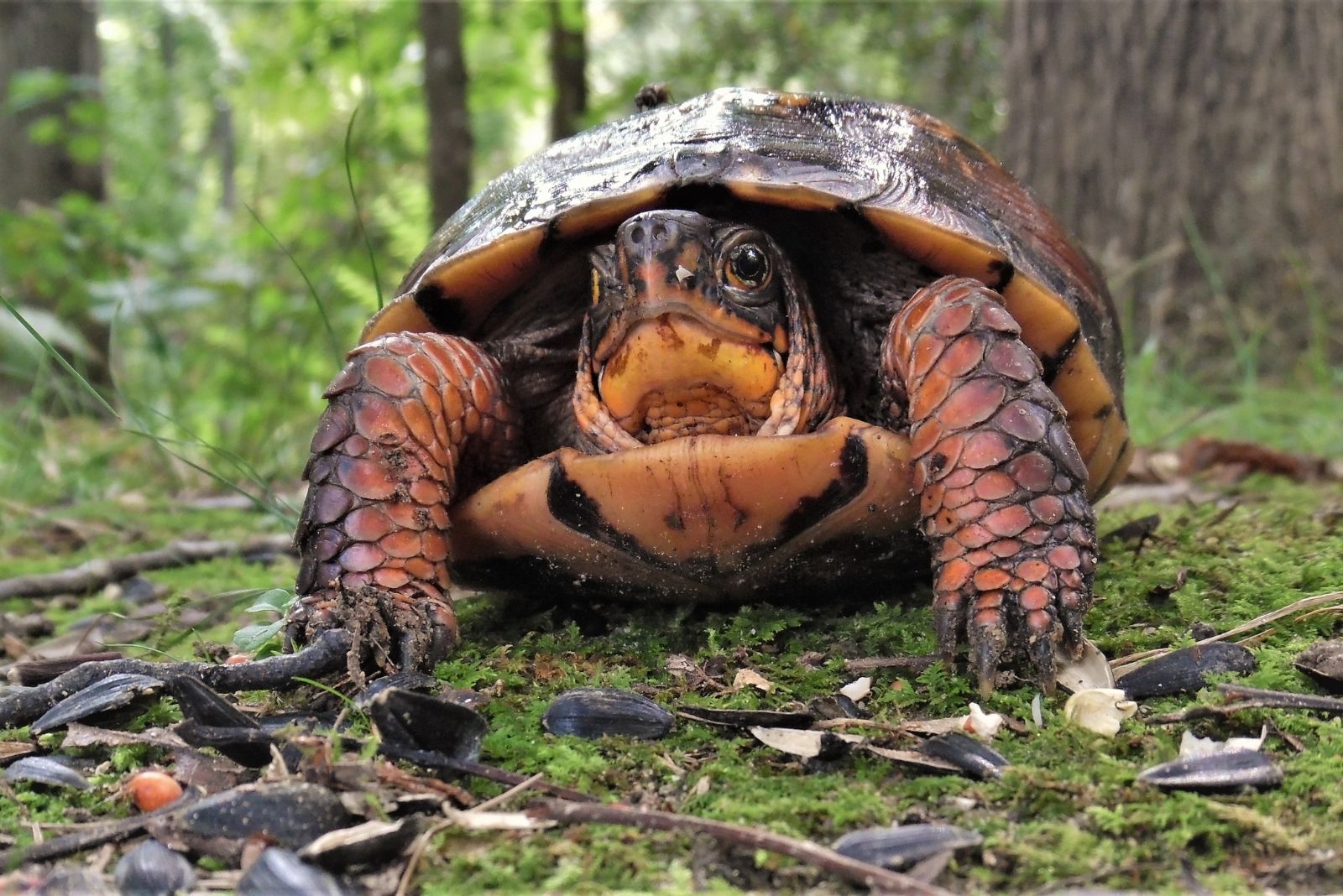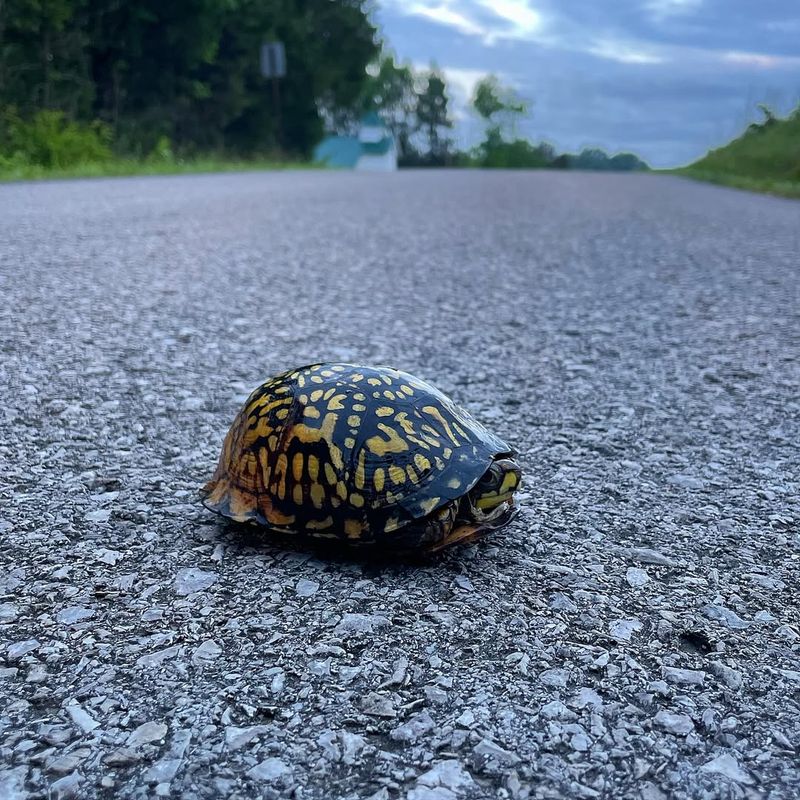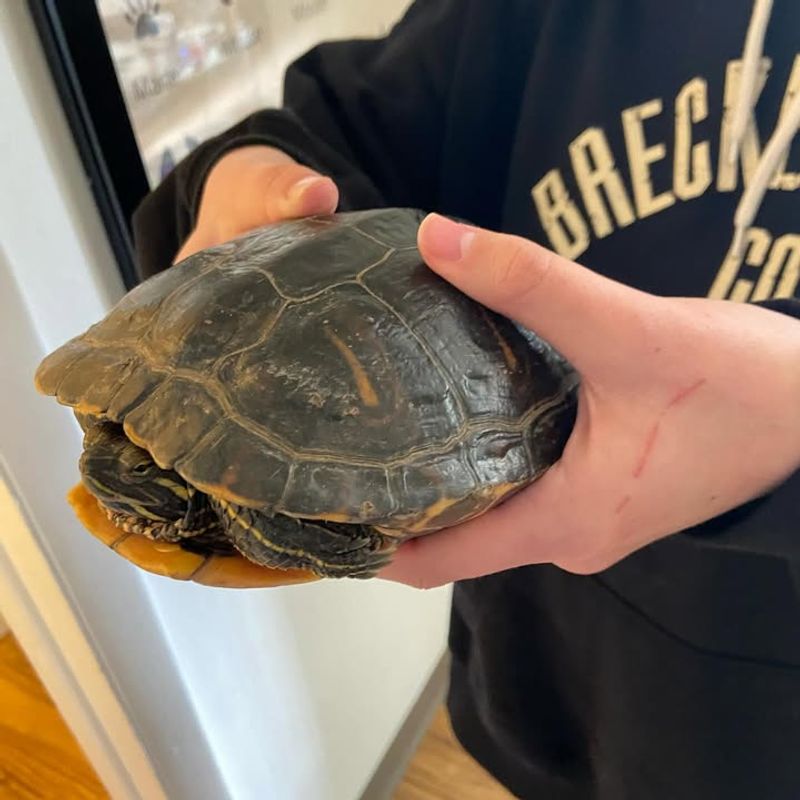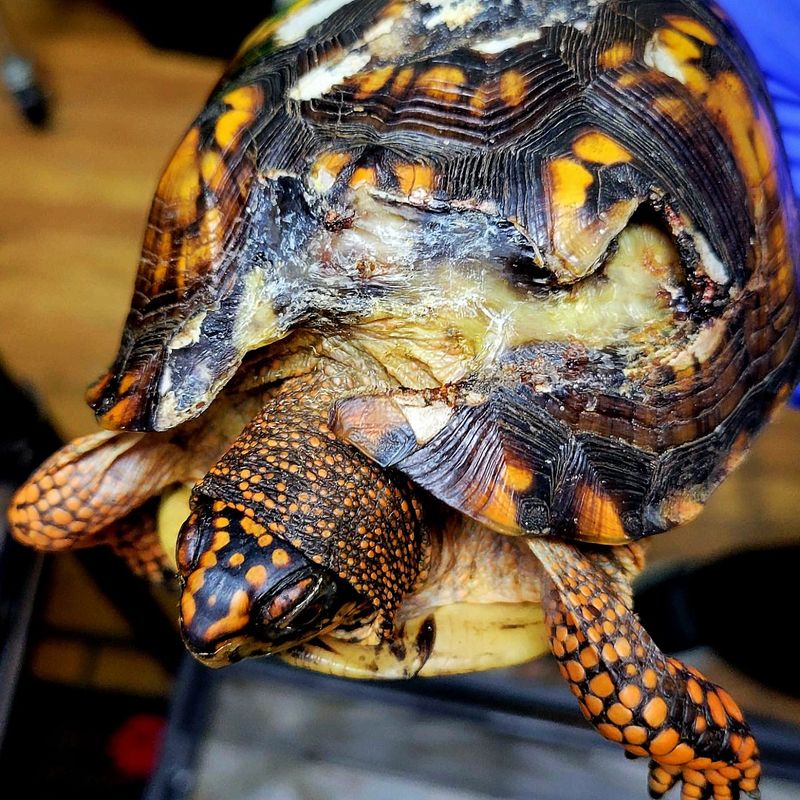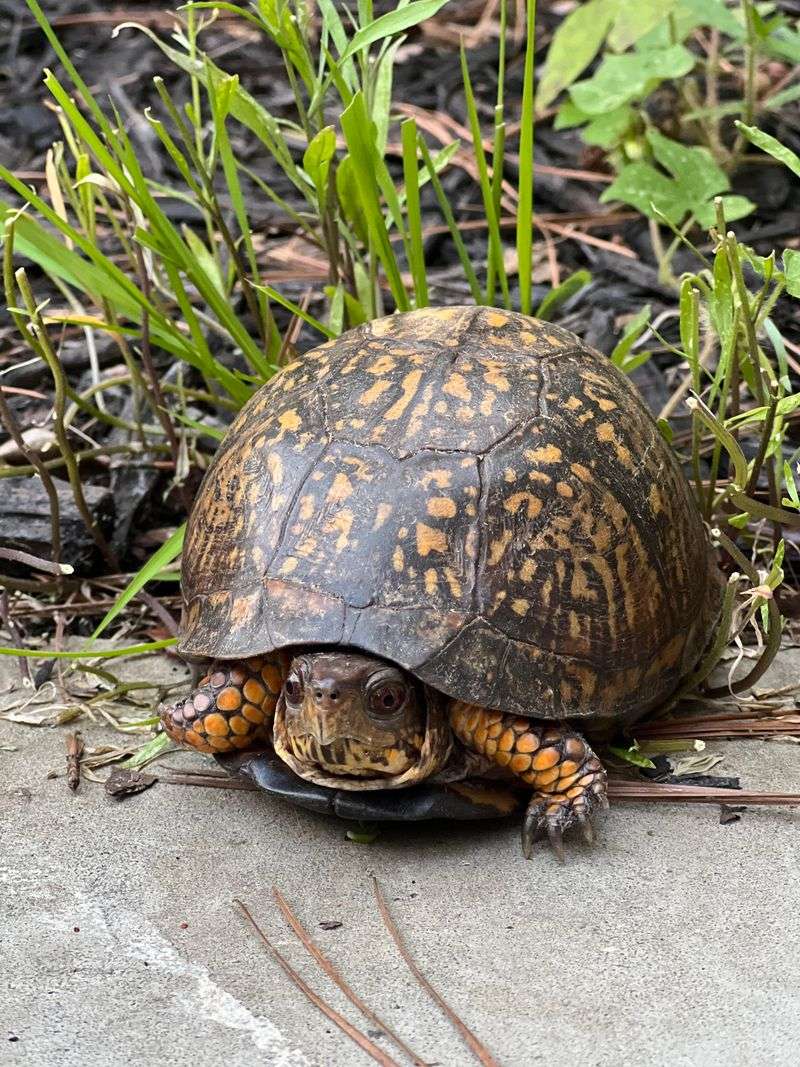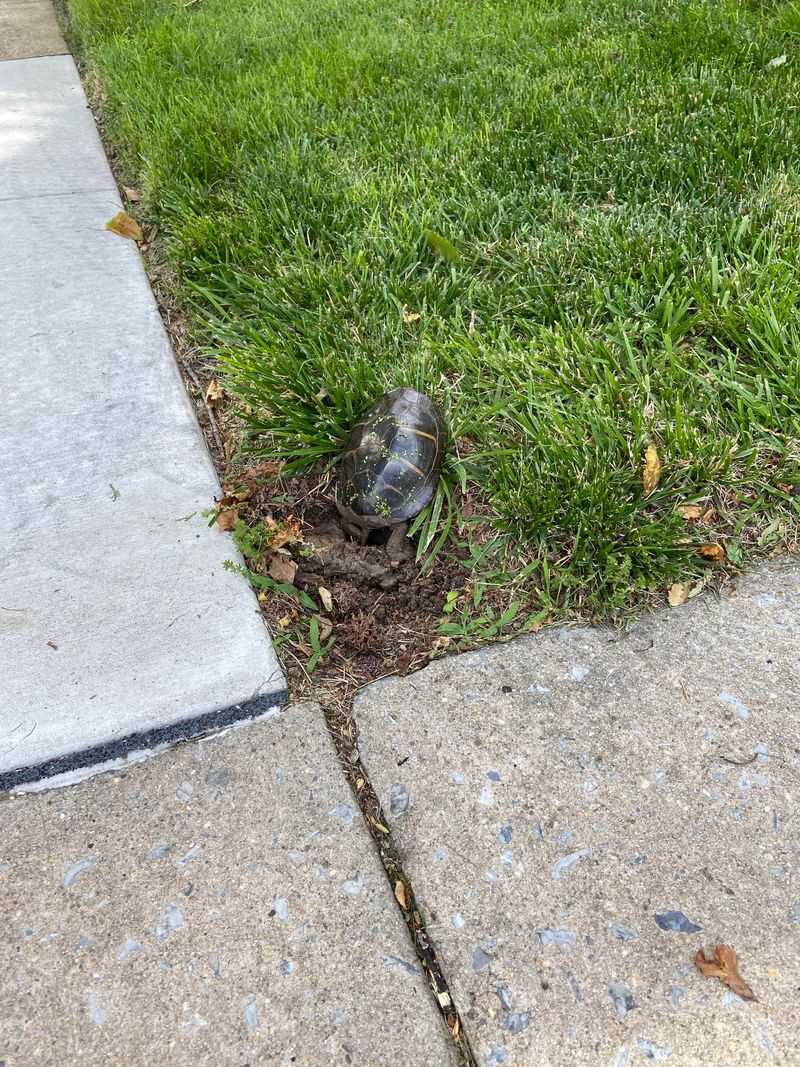Spotting a turtle in your Pennsylvania yard can be a surprise—and it’s not always clear what to do. Should you move it, leave it be, or call for help?
The right response depends on the situation, but one thing’s certain: handling it properly keeps both you and the turtle safe. These slow-moving visitors are part of the local ecosystem.
I’ve found that most turtles are just passing through and don’t need intervention. This quick guide can help you make smart choices when one shows up on your property.
1. Observe From A Safe Distance First
Before rushing over, take a moment to watch the turtle from where you stand. Many species native to Pennsylvania are harmless and just passing through your yard on their way to water or nesting sites.
Watching quietly lets you identify whether it looks healthy or injured. You’ll also notice if it’s moving with purpose or seems disoriented.
Keeping your distance reduces stress for the animal. Turtles can retreat into their shells when frightened, making it harder to assess their condition or help if needed.
2. Identify The Species If Possible
Pennsylvania is home to several turtle species, including box turtles, painted turtles, and snapping turtles. Knowing which type you’ve found helps you decide the best course of action.
Box turtles have high-domed shells and often live in wooded areas. Painted turtles prefer wetlands and have colorful markings on their shells and skin.
Snapping turtles are larger with rough shells and powerful jaws. If you’re unsure, snap a photo and look it up online or contact local wildlife experts for identification help.
3. Never Relocate Turtles Far From Where You Found Them
Turtles have strong homing instincts and know their territory well. Moving them far away can disorient them and put their survival at risk.
If the turtle is in immediate danger—like near a busy road or pool—you can carefully move it a short distance in the direction it was heading. Always place it in similar habitat, like grass or wooded edges.
Pennsylvania wildlife experts recommend keeping relocations under 100 feet. This respects the turtle’s natural range while keeping it safe from hazards around your home.
4. Handle With Care If You Must Pick It Up
Sometimes you need to move a turtle to protect it. Always grasp it firmly by both sides of the shell, near the middle, and keep it low to the ground.
Avoid picking it up by the tail, which can injure the spine. Be especially cautious with snapping turtles—they have long necks and can bite. Hold them by the rear of the shell instead.
Wash your hands thoroughly afterward, as turtles can carry salmonella. Wearing gloves is a smart choice if you have them handy when handling any turtle.
5. Contact Professionals If The Turtle Appears Injured
Cracks in the shell, bleeding, or visible wounds mean the turtle needs professional care. Don’t try to treat injuries yourself, as improper handling can worsen the problem.
Pennsylvania has wildlife rehabilitation centers that specialize in treating injured turtles. You can find contact information through the state Game Commission or local animal control offices.
Transport the injured turtle in a ventilated box lined with damp towels. Keep it in a quiet, temperature-controlled space until you can get it to a rehab facility for proper treatment and recovery.
6. Provide A Safe Path To Natural Habitat
Creating an escape route for your shelled visitor often solves the problem naturally. Many turtles passing through yards are simply traveling between habitats and will move along once they find their way.
Check your fence line for gaps or openings that lead toward wooded areas, ponds, or streams nearby. Turtles have excellent navigation instincts and usually know where they’re headed. Remove any obstacles like lawn furniture, toys, or garden decorations that might block their path.
If your yard has a pool or water feature, ensure the turtle can’t fall in or get trapped. Most terrestrial turtles aren’t strong swimmers and could drown in deep water with slippery sides.
7. Respect Nesting Behavior During Spring And Early Summer
Female turtles venture into yards between May and July searching for perfect nesting spots. Sandy, well-drained soil with good sun exposure attracts expectant mothers who dig holes to lay their eggs.
If you spot a turtle digging, maintain your distance and keep pets indoors. The nesting process takes several hours, and disturbances can cause her to abandon the site. Mark the area with small stakes and colorful flags so family members and lawn equipment avoid it.
Once she finishes and leaves, protect the nest from predators using wire mesh secured with landscape staples. Baby turtles will emerge in late summer or fall, depending on the species and weather conditions in Pennsylvania.

